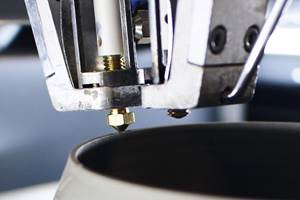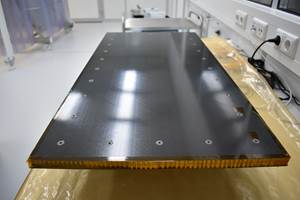Space Walker relocates flagship branch for next phase of spaceplane development
The move to Minamisoma City supports the startup’s future mass production of reusable composite launch vehicles, supporting Japan’s future competitiveness in the space industry.
On May 23, Space Walker Inc. (Tokyo, Japan) announced the relocation of its flagship branch and business from Chiyoda Ward, Tokyo, to Minamisoma City, Fukushima Prefecture, with the purpose of further advancing its composites-intensive spaceplane development and preparing a future mass production system. The company notes that while the flagship branch was relocated, its head office remains in Shimbashi, Minato-ku, Tokyo, where the Administrative Division continues to operate.
With the establishment of a development and production base, the company aims to anchor its space transportation technology and promote the regional industry, providing an optimized environment to develop, test and manufacture spaceplanes. Space Walker’s flagship branch specifically aims to advance social implementation of winged reusable launch vehicles while strengthening local industry infrastructure.
Minamisoma City offers infrastructure that supports R&D of robotics and advanced technology, which contributed to this decision. Space Walker says it is an area that is actively involved in fostering new industries, including space-related industries. Another critical factor for the new location is its sea access to the town of Taiki in Hokkaido, which Space Walker is considering as a launch pad. Under these circumstances, Space Walker will establish a development and production base in Minamisoma to promote space transportation technology and industrial infrastructure, as well as to contribute to the formation of a new industrial base deeply rooted in the region.
Space Walker is developing a winged, reusable, suborbital spaceplane for launch in the 2030s. Currently, it is progressing the RaiJin Mission, a small suborbital satellite launch, in March 2028. In spaceplane development, key components such as methane engines, composite material tanks and systems technology play an important role. Space Walker aims to commercialize these component units to strengthen the Japanese space industry’s competitiveness. Head office relocation and development and production base establishment addresses these additional objectives:
- Establishing individual factories for technical testing, development and manufacturing of spaceplanes and various components in collaboration with local enterprises in Minamisoma City, to compose a core base for production and development systems.
- Expand employment of highly skilled technicians (engineers, manufacturing technicians, test operation staff, etc.) in the region, as well as throughout Japan and overseas.
- Promote training of next-generation space engineers in cooperation with universities and research institutions in the region and beyond
- Provide learning opportunities and events using the space industry, and collaborate with local manufacturing industries, among other options, to provide opportunities to enter the space industry from various perspectives, thus increasing regional recognition.
Currently, Minamisoma City is actively promoting the aerospace industry under the national project “Fukushima Innovation Coast Initiative,” and has established the Fukushima Robot Test Field (RTF) and the Space Industry Promotion Office. The relocation of Space Walker’s flagship branch to Minamisoma means that the company will follow in those same steps.
Space Walker is a startup certified by the Tokyo University of Science that conducts R&D of winged reusable rockets (spaceplanes) to provide a sustainable means of space transportation. The company is also engaged in the development, manufacturing and sales of next-generation composite material tanks that contribute to decarbonization.
Related Content
Low-cost, efficient CFRP anisogrid lattice structures
CIRA uses patented parallel winding, dry fiber, silicone tooling and resin infusion to cut labor for lightweight, heavily loaded space applications.
Read MoreDesign for manufacturing, assembly and automation enables complex CFRP telescope supports
Airborne delivered two mirror support structures for the FYST and SOLAT telescopes, assembling 26,300 components while maintaining near-zero CTE, strict tolerances on 6.5 × 6.5 × 1.8-meter assemblies.
Read MoreA new era for ceramic matrix composites
CMC is expanding, with new fiber production in Europe, faster processes and higher temperature materials enabling applications for industry, hypersonics and New Space.
Read MoreNanomaterials optimize performance of space-ready carbon fiber composite panels
A recent ESA project led by Adamant Composites aimed to mature nanomaterial-enhanced CFRP for lighter weight, more thermally and electrically conductive materials for manufacturing satellite structures.
Read MoreRead Next
Dream Chaser spaceplane passes NASA testing milestone
Sierra Space aircraft joint test confirms powered payload capabilities necessary for its inaugural mission to the International Space Station.
Read MoreSpace Walker raises $4.5 million for composite spaceplane, business developments
Cumulative seed funding closes at $10 million for development of CFRP suborbital spaceplane and bolstering of new composite materials department.
Read MorePolaris reaches €7.1 million in private funding for spaceplane development
Polaris welcomes new shareholder Dienes Holding supporting the German startup’s path to spaceflight, hypersonics commercialization.
Read More



























